After surviving – and thoroughly enjoying – our first Indiana winter, spring arrived. Spring is absolutely beautiful in California but Indiana holds its own very well. First to arrive are the tulips and daffodils and then the incredibly spectacular dogwood trees.
With the new birth of spring came a new desire in my mom – she wanted to buy ducks and chickens. First, with the help of an architect uncle, we built a hen house. Knowing my mom, it couldn’t be just any hen house. It had to look like a small replica of our house, replete with shutters and shingles.
After the hen house was complete, it was time to make a visit to the local poultry farmer. Once again, it couldn’t be just any poultry farmer that sold only boring, white chickens and ducks. We had to go to the farmer who sold fancy breed chickens and ducks. We bought a variety of baby Bantams and Rhode Island Reds, and some Mallard ducklings.
We brought them home, helped them acclimate to their new surroundings and got far too attached. We definitely thought of them as pets, not as farm animals. We named them all, taught them to follow us around the yard, and insisted on holding them to the point where they finally gave up all resistance.
As our chicks and ducklings continued to grow, we noticed something interesting about one of the ducklings. Instead of turning brown as Mallard ducks are supposed to, this duck stayed white.
In fact, the more this duck grew the whiter he became. And the bigger he grew the longer his bill became. He actually didn’t really look like a duck at all. He looked more like a goose. We may have been new at this farming business, but we could tell the difference between a duck and a goose (eventually).
Clearly, this baby goose had gotten mixed up with the ducklings and even the farmer didn’t notice the difference! But once we accepted the fact that we were proud owners of a huge, white goose we embraced it wholeheartedly.
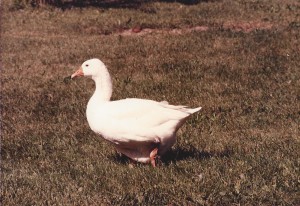
Willard – the Goose!!
We decided to name the goose “Willard”. Willard was a truly unique goose. Obviously, we didn’t really know many other geese but we were fairly certain that the average goose didn’t follow you wherever you go. The average goose didn’t knock on the kitchen door when it’s cold outside (yes, we let him in once when he was being particularly persistent). The average goose didn’t adopt baby chicks when a raccoon had killed their mother. The average goose didn’t think our little, white Toyota Celica was his mother, nestling up to its tires for hours at a time.
And the average goose named Willard definitely shouldn’t lay eggs. That’s right, one day we found “Willard” sitting on an egg. At first we thought he had just adopted one of the duck or chicken eggs, but this egg was significantly larger. It was definitely Willard’s. Which meant Willard was a girl.
We obviously had a major learning curve when it came to raising poultry! Sadly, Willard (or Wilhelmina as we renamed her) never hatched any of her eggs because some wild critter (raccoon, opossum or fox) would always steal them. This was one of the major down sides to raising farm animals.
Speaking of predators, one day Willard/Wilhelmina had a run in with a neighborhood dog. As dogs do, he went in for the kill by clamping his jaws around her neck. We never knew for sure what made the dog let go but the next thing we knew it was running away and Willard/Wilhelmina was lying motionless. She was still alive but badly injured. The bite marks in her neck were deep and couldn’t be ignored.
As I mentioned earlier, we were very attached to our farm pets so letting her suffer was not an option. The only thing we could think to do was take her to the vet. We called our local vet – who didn’t normally take care of poultry but he said he’d take a look at her. Of course, that meant we had to get her there. So what did we do? Well, my mom drove while I held our precious goose in my lap! Because she was an especially large goose, anyone else on the road who happened to pass us could clearly see her head. I can still picture today the gentleman’s look on his face as he pulled up beside us at a red light, casually glanced my way and saw a goose – with a towel wrapped around its head to staunch the blood – sitting on my lap. I don’t think I can adequately describe that man’s expression, so I won’t even try.
With some tender, loving care Willard/Wilhelmina survived her injuries and remained a faithful friend and pet for many years. She will certainly never be forgotten.
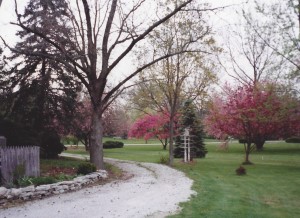
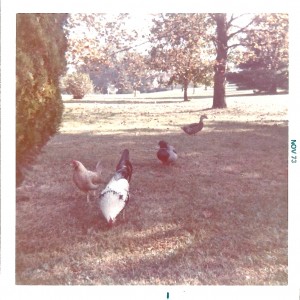
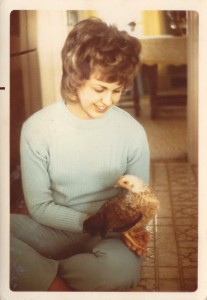
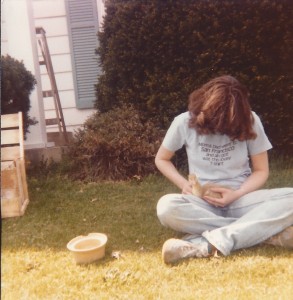
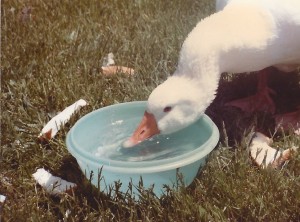
I remember that goose!